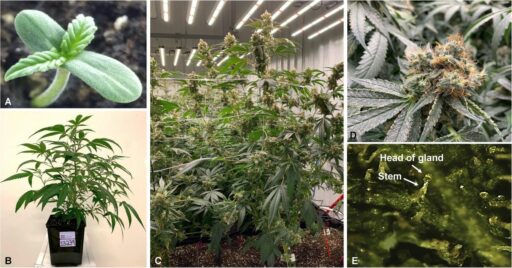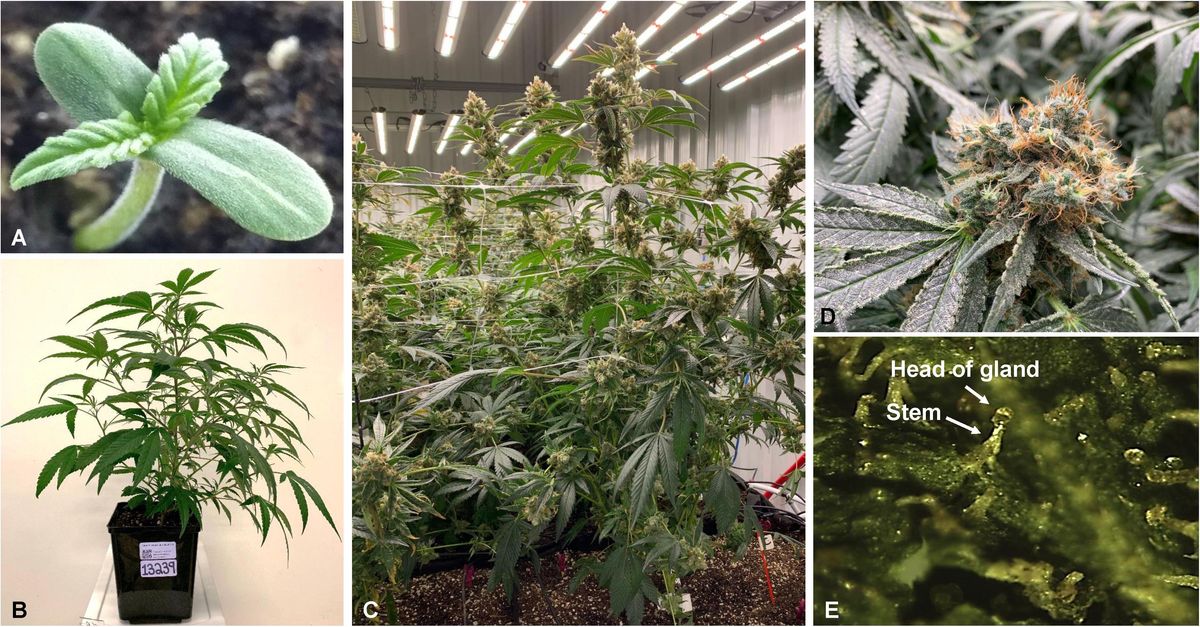As the interest in medical marijuana continues to grow, it’s important to understand the various types of cannabis, their uses, and their potential health benefits. This article delves into the world of medical marijuana, exploring the differences between strains such as Cannabis Sativa and Cannabis Indica, their medicinal applications, and the key chemical components that contribute to their effects. Whether you’re a patient seeking alternative treatment or simply curious about the therapeutic aspects of cannabis, this guide will provide valuable insights into selecting and responsibly using medical marijuana.
Key Takeaways
- Cannabis Sativa and Cannabis Indica are the two main species of cannabis, each with unique effects and medicinal benefits.
- Hybrid strains combine characteristics of both Sativa and Indica, offering a balanced range of effects tailored to individual needs.
- Cannabinoids like THC and CBD, along with terpenes, are the key compounds in cannabis that interact with the body’s endocannabinoid system to produce various therapeutic effects.
- Medical marijuana can be used for pain management, mood disorders, and to enhance energy and creativity, but should always be used under the guidance of a healthcare professional.
- For beginners, it’s crucial to select the appropriate strain, start with low dosages, and understand the effects to ensure a safe and enjoyable experience.
Understanding the Different Types of Cannabis

Cannabis Sativa vs. Cannabis Indica
Understanding the differences between Indica and Sativa strains is crucial for those looking to tailor their cannabis experience. Sativa strains, known for their tall, slender appearance, originate from equatorial regions and are often associated with uplifting and energizing effects. They are typically favored for daytime use due to their ability to enhance focus, creativity, and sociability.
On the other hand, Indica strains are characterized by a more compact and bushy plant structure. These strains are often sought after for their relaxing and sedative properties, making them a popular choice for evening use. Users may find that Indica strains help with sleep and can provide relief from body discomfort.
While both Sativa and Indica strains offer distinct experiences, hybrid strains aim to combine the best of both worlds, offering a balance of effects.
It’s important to note that individual experiences can vary, and factors such as THC and CBD content, as well as terpene profiles, play a significant role in the overall effect of a strain.
Hybrid Strains: Combining the Best of Both Worlds
Hybrid strains represent a fusion of the distinctive qualities of Cannabis Indica and Cannabis Sativa, offering a versatile option for users seeking a balanced experience. Hybrids are crafted to provide a mix of both energizing and calming effects, which can be tailored to individual preferences and therapeutic needs.
- Sativa-dominant hybrids tend to be more uplifting and may enhance creativity and focus.
- Indica-dominant hybrids usually offer more relaxation, making them suitable for evening use.
- Balanced hybrids aim to deliver an even combination of Sativa and Indica effects.
The proportion of Sativa to Indica in a hybrid can influence its overall impact, with the following table illustrating typical effects based on dominance:
| Hybrid Type | Energy Level | Mood Impact |
|---|---|---|
| Sativa-dominant | High | Uplifting |
| Indica-dominant | Low | Relaxing |
| Balanced | Moderate | Stabilizing |
The beauty of hybrid strains lies in their ability to be customized. By adjusting the ratio of Sativa to Indica, cultivators can create strains that target specific effects and benefits.
It’s essential to note that individual responses to cannabis can vary widely. A strain that might be energizing for one person could have a more subdued effect on another. Experimentation under guidance can help determine the best hybrid strain for your unique needs.
Cannabinoids and Terpenes: The Chemicals Behind the Effects
Cannabinoids are the powerhouse chemicals in cannabis, including well-known compounds like THC and CBD, as well as others such as CBG, CBN, and THC-V. These substances interact with the body’s endocannabinoid system to produce a range of therapeutic effects. Terpenes, on the other hand, are aromatic compounds that give cannabis its distinctive scents and flavors.
Terpenes not only define a strain’s aromatic profile but also contribute to the therapeutic outcomes through their interaction with cannabinoids, a phenomenon known as the entourage effect.
Trichomes, the tiny, mushroom-shaped structures on the cannabis plant, are where both cannabinoids and terpenes are synthesized and stored. Understanding the role of these chemicals is crucial for appreciating the full potential of medical marijuana.
Here is a brief overview of some key cannabinoids and their noted effects:
- THC (Tetrahydrocannabinol): Responsible for the psychoactive effects, also aids in pain relief and appetite stimulation.
- CBD (Cannabidiol): Non-psychoactive, known for anti-inflammatory properties and reducing anxiety.
- CBG (Cannabigerol): May help with inflammation, pain, and nausea.
- CBN (Cannabinol): Potential sedative effects, often associated with aiding sleep.
The synergy between these compounds can lead to enhanced therapeutic benefits, a concept central to the medicinal use of cannabis.
Medicinal Applications of Cannabis Strains

Pain Management and Chronic Conditions
The therapeutic landscape of medical marijuana is evolving, with a growing emphasis on its potential in pain management and chronic conditions. Clinical practice guidelines suggest the use of cannabis and cannabinoid-based medicines (CBM) for chronic pain, highlighting their significance in the medical community.
- Anxiety and insomnia are two conditions where CBD has shown promise, potentially reducing anxiety and aiding in sleep by addressing underlying chronic pain.
- The European Journal of Pain has indicated that CBD could lower pain and inflammation due to arthritis, particularly when applied topically.
- Beyond pain relief, CBD may also inhibit inflammatory and neuropathic pain, which are notoriously challenging to treat.
The exploration of CBD’s role in addiction treatment reveals its potential to lessen cravings for substances like tobacco, heroin, and even alcohol, according to some human and animal studies.
As research progresses, the nuances of how different strains and formulations affect various chronic conditions will become clearer, offering patients tailored solutions for their specific needs.
Mental Health: Anxiety, Depression, and Mood Disorders
The therapeutic landscape for managing mental health conditions such as anxiety, depression, and mood disorders is evolving, with cannabis strains emerging as a potential ally. For individuals grappling with these conditions, the calming and soothing effects of certain cannabis strains can offer significant relief.
Cannabis products, particularly those high in CBD, have been reported to help alleviate symptoms of anxiety and depression. This is supported by both anecdotal evidence and a growing body of research.
Here are some of the best cannabis strains for anxiety relief as of 2024:
- Granddaddy Purple: Known for its relaxing effects.
- Jack Herer: Offers a balance of cerebral and body relaxation.
- Cannatonic: High in CBD, it’s often chosen for stress relief.
Determining the right strain for your specific needs may involve some trial and error. It’s important to start with low doses and monitor how your body and mind respond. Remember, what works for one person may not work for another, so personal experience is key in finding the most effective strain for your mental health.
Sativa Strains for Daytime Use: Energy and Creativity
Sativa strains are renowned for their energizing effects and are often recommended for daytime use. These strains are high in THC, which contributes to their ability to enhance focus, creativity, and sociability. Users report a sense of upliftment and energy, making Sativas suitable for combating fatigue and low motivation.
Sativa varieties are known for stimulating creativity and productivity. They provide a cerebral high that can help unlock new ideas and fuel artistic endeavors, making them a favorite among artists, writers, and anyone in need of a creative boost.
However, it’s important to note that for some individuals, Sativas can induce feelings of anxiety or paranoia. Therefore, it’s crucial to start with a low dose, especially if you are new to using Sativa strains or have a history of anxiety.
Here are some popular Sativa strains and their typical effects:
- Jack Herer: Upliftment, creativity, energy
- Green Crack: Focus, energy, happiness
- Sour Diesel: Energetic, dreamy cerebral effects
Remember, while Sativa strains can offer many benefits, responsible use and understanding your own reaction to different strains is key to a positive experience.
Key Terms Related to the Cannabis Plant

Understanding THC and CBD Ratios
The THC:CBD ratio is a fundamental aspect to consider when selecting a medical marijuana strain. The ratio can significantly influence the therapeutic effects and user experience. For instance, a higher THC content typically results in more pronounced psychoactive effects, which may be beneficial for certain conditions like chronic pain or insomnia. Conversely, a higher CBD content may offer more subtle effects, with an emphasis on relaxation and anxiety relief without the intense ‘high’.
The entourage effect suggests that the combination of THC, CBD, and other cannabinoids can lead to enhanced therapeutic outcomes compared to the effects of a single cannabinoid in isolation.
Understanding the nuances of these ratios is essential for patients and consumers aiming to tailor their cannabis use to specific health goals. Here’s a simple breakdown of common THC:CBD ratios and their general effects:
- 1:1 – Balanced effects; suitable for a variety of conditions.
- High THC – Stronger psychoactive effects; may help with pain, appetite loss, and sleep disorders.
- High CBD – Milder effects; often chosen for anxiety, inflammation, and seizure disorders.
Terpenology: The Study of Cannabis Aromas
Terpenes are the aromatic compounds that give cannabis its distinctive bouquet. These compounds are not only responsible for the wide variety of scents found in different cannabis strains, but they also play a crucial role in influencing the plant’s effects on the body and mind. Understanding terpenes is essential for both connoisseurs and patients, as they contribute to the therapeutic properties of the plant.
Terpenes interact with cannabinoids like THC and CBD, enhancing their effects in what is known as the ‘entourage effect’. This synergy can alter the intensity and quality of the user’s experience.
Here is a list of common terpenes found in cannabis, along with their notable aromas and potential benefits:
- Myrcene: Earthy and musky, it’s known for its relaxing effects.
- Limonene: Citrusy, it may elevate mood and relieve stress.
- Pinene: Pine aroma, it could aid in memory retention and alertness.
- Linalool: Floral scent, often associated with calming anxiety.
- Caryophyllene: Spicy and woody, it might have anti-inflammatory properties.
Each strain of cannabis has a unique terpene profile that can influence its suitability for different medical conditions or desired effects. For example, the Chem 91 strain is celebrated for its pungent, diesel aroma and is often sought after for its ability to foster creativity and alleviate stress.
The Endocannabinoid System and Its Role in Therapy
The endocannabinoid system (ECS) is a complex network that plays a crucial role in maintaining homeostasis within the body. It consists of receptors, enzymes, and endogenous cannabinoids that interact with plant-derived cannabinoids like THC and CBD. This interaction can influence a variety of physiological processes including mood, appetite, pain sensation, and immune response.
The ECS’s ability to regulate numerous biological functions makes it a target for therapeutic interventions, particularly in areas where conventional treatments may fall short.
Cannabinoids from cannabis, such as THC and CBD, have shown potential in addressing a range of health issues. The therapeutic effects of these compounds are being explored for conditions like chronic pain, epilepsy, multiple sclerosis, and even certain psychiatric disorders. Understanding how these cannabinoids work with the ECS is key to unlocking their full potential in therapy.
Here are some of the biological mechanisms influenced by the ECS:
- Neurodevelopment
- Cognition
- Mood
- Sleep
- Appetite
Responsible Use and Dosage Guidelines

Determining the Right Dosage for Your Needs
Finding the right dosage of medical marijuana is a critical step in ensuring therapeutic benefits while minimizing potential side effects. The process of determining the correct amount can be complex due to individual differences in body chemistry and tolerance levels.
- Start with a low dose: Begin with a small amount, such as 2-5 milligrams of THC, and observe the effects.
- Gradual increase: If necessary, increase the dosage slowly, by one milligram every 24 hours, until you reach the desired effect.
- Microdosing: Consider microdosing, a method that involves taking very small doses to achieve a subtle physiological or therapeutic effect without a pronounced psychoactive experience.
It is often recommended to "start low and go slow" to avoid any adverse reactions and to find the most effective dose for your individual needs.
Always consult with a healthcare professional or cannabis consultant to tailor the dosage to your specific condition and to ensure a safe and beneficial experience. Remember, what works for one person may not work for another, so personalization is key.
The Importance of Starting Low and Going Slow
When embarking on the journey of medicinal cannabis use, the mantra to start low and go slow is not just a suggestion—it’s a fundamental guideline for safe consumption. This approach helps in understanding how your body reacts to cannabis and in preventing any overwhelming experiences.
By beginning with lower doses, you give your body the chance to adapt and respond to the cannabinoids. This gradual increase is crucial in finding the ‘sweet spot’ where therapeutic benefits are maximized without undesirable side effects.
Here are some steps to consider when starting your cannabis regimen:
- Assess your tolerance: Start with a very low dose, especially if you are new to cannabis.
- Monitor effects: Pay attention to how you feel after each dose. It may take some time for effects to become noticeable.
- Adjust accordingly: If you feel comfortable, slightly increase the dose after a reasonable period, ensuring you are still within safe limits.
Remember, each individual’s response to cannabis can vary greatly. Factors such as body weight, metabolism, and previous exposure to cannabis can all influence your experience. Therefore, it’s important to personalize your approach and, if possible, consult with a healthcare professional or cannabis consultant.
Navigating the Effects: What to Expect
When you consume cannabis, the experience can be as unique as the individual. The effects can vary widely based on several factors, including the strain, dosage, method of consumption, and personal physiology. It’s important to approach cannabis use with an understanding of these variables to manage expectations and ensure a positive experience.
While some effects are commonly sought after, such as relaxation or pain relief, others like heightened sensory perception or altered time awareness can be unexpected. Being informed about potential outcomes helps in navigating the cannabis experience.
Here’s a quick guide to some typical effects you might encounter:
- Euphoria or a sense of well-being
- Increased appetite, often referred to as ‘the munchies’
- Dry mouth or ‘cottonmouth’
- Altered motor skills and coordination
- Changes in sensory perception
- Relaxation or drowsiness
- Enhanced creativity or focus
Remember, these effects are not guaranteed and can differ from person to person. If you’re trying cannabis for the first time, it’s crucial to start with a low dose and go slow. This approach allows you to gauge how your body reacts and adjust accordingly.
Selecting the Right Cannabis Strain for Beginners

Characteristics of Beginner-Friendly Strains
When venturing into the world of cannabis cultivation, beginners should look for strains that offer a simpler cultivation process and higher success rates. Beginner-friendly strains often come with certain traits that make them more suitable for those with less experience. These include autoflowering and feminized seeds, which are generally easier to manage due to their resilient nature and predictable growth patterns.
- Autoflowering seeds automatically switch from vegetative growth to flowering without the need for a change in light cycles, simplifying the growing process.
- Feminized seeds are bred to eliminate male chromosomes, ensuring that nearly all plants grown from these seeds will flower as females, which are the ones that produce buds.
It’s essential for beginners to select strains that are not only easy to grow but also provide a rewarding experience in terms of yield and quality.
Additionally, strains that are known for their adaptability to both indoor and outdoor environments can offer new cultivators more flexibility. The resilience of these strains often translates into a more forgiving experience, accommodating the learning curve associated with first-time growing.
How to Choose Based on Desired Effects
Choosing the right cannabis strain is essential for achieving the desired effects and therapeutic benefits. Personal preferences and tolerance levels are key factors in this decision-making process. For those new to cannabis or looking to refine their experiences, here are some considerations:
- THC potency: Higher THC levels typically result in more intense psychoactive effects.
- Terpene profile: Different terpenes can influence the flavor, aroma, and potential health benefits.
- Desired effects: Whether seeking relaxation, pain relief, or a boost in creativity, select strains known for these qualities.
When exploring Sativa strains, it’s important to balance the energizing effects with the potential for anxiety or restlessness. Strains with calming properties can offer a more comfortable experience.
Remember, the best way to find the perfect strain is through experimentation and guidance from experienced professionals. Always ensure you are in compliance with local laws and purchase from reputable dispensaries.
Tips for Safe and Enjoyable First Experiences
Embarking on your first journey with medical marijuana can be both exciting and daunting. To ensure a positive experience, it’s crucial to approach it with mindfulness and preparation. Here are some tips to guide you:
- Start with a low dose and gradually increase it as needed. This helps you understand your tolerance and avoid overconsumption.
- Choose a comfortable and familiar setting for your first time. Being in a safe environment can significantly enhance your experience.
- Have a trusted friend with you who can assist if you feel uncomfortable or need support.
- Stay hydrated and have snacks on hand, as cannabis can sometimes cause dry mouth and increased appetite.
- Avoid mixing cannabis with alcohol or other substances, as this can lead to unpredictable effects.
- Be patient; edibles can take longer to kick in, so wait at least an hour before considering taking more.
Remember, the goal is to find relief and comfort, not to push your limits. Listen to your body and respect its responses.
Lastly, it’s advisable to record your experience. Keeping a journal of your dosages and their effects can be invaluable as you learn to navigate the world of medical marijuana. This record will help you determine the best dosage and strain for your needs.
Conclusion
In conclusion, the exploration of medical marijuana reveals a complex and diverse world of strains, each with its unique properties and potential health benefits. From the calming effects of Indica to the energizing influence of Sativa, and the balanced nature of hybrids, patients have a plethora of options to tailor their therapeutic experience. It is crucial, however, to approach medical cannabis with an informed mindset, understanding the importance of responsible use, dosage guidelines, and consultation with healthcare professionals. As research continues to unfold the intricacies of cannabis and its interaction with the human body, we move closer to fully harnessing its medicinal potential for a variety of conditions. Whether seeking relief from chronic pain, anxiety, or looking for an uplift in mood, medical marijuana offers a natural alternative that underscores the importance of personalized medicine in contemporary healthcare.
Frequently Asked Questions
What are the main differences between Cannabis Sativa and Cannabis Indica?
Cannabis Sativa strains are generally associated with energizing and uplifting effects, often referred to as ‘uppers’. They are suitable for daytime use, promoting creativity and productivity. Cannabis Indica strains, on the other hand, tend to have sedative properties, providing relaxation and are often used for nighttime relief.
Can hybrid strains offer benefits from both Sativa and Indica varieties?
Yes, hybrid strains are cultivated to combine traits from both Sativa and Indica plants. They can offer a balance of energizing and relaxing effects, making them adaptable to various needs and preferences.
How do cannabinoids and terpenes affect the experience of using cannabis?
Cannabinoids like THC and CBD interact with the endocannabinoid system in our bodies, influencing effects such as pain relief, mood alteration, and more. Terpenes contribute to the aroma and flavor of cannabis and can also affect the overall experience by enhancing certain effects or therapeutic benefits.
What should I consider when determining the right dosage of cannabis for my needs?
When determining the right dosage, consider factors such as your tolerance, the method of consumption, the strain’s potency, and the desired effects. It’s important to start with a low dose and gradually increase it (‘start low and go slow’) to avoid adverse effects and find the optimal therapeutic benefit.
What are some beginner-friendly cannabis strains and how should I choose one?
Beginner-friendly strains typically have a balanced THC to CBD ratio and offer mild effects. When choosing a strain, consider what effects you’re seeking (e.g., relaxation, pain relief, mood enhancement) and consult with a knowledgeable dispensary staff or healthcare provider for recommendations.
Are Sativa strains suitable for medical purposes, and what conditions can they help manage?
Sativa strains are suitable for medical purposes and can help manage conditions such as chronic pain, migraines, depression, and anxiety due to their energizing and mood-enhancing effects. They are particularly valued for daytime use when patients need relief but also need to remain alert and active.





